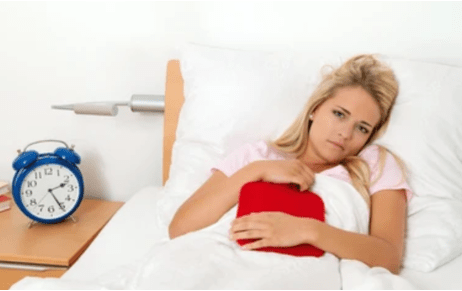INTRODUCTION When a woman experiences her period or menstruates, the menstrual cycle begins. A woman's…
Indian Patent office rejects Patent claim over Abraxane
In a major setback, the Indian Patent Office denied a patent to an anti-cancer drug Abraxane manufactured by US-Based Abraxis BioSciences. Here we will discuss the decision given by IPO at the backdrop of the arguments advanced by the respective parties.
Background
In a brief, Patent application no. 2899/DELNP/2005 filed by Abraxis Biosciences was earlier rejected by the Indian patent office on 24th July 2009, based on u/s 2(1)(j), u/s 3(e ), and u/s 10 of the Patents Act, 1970. Being aggrieved by the decision of the Controller General of Patents, the applicant filed an appeal (M.P.NO. 57/2010 IN OA/3/2010/PT/DEL and OA/3/2010/PT/DEL) in ‘Intellectual Property Appellate Board’ (IPAB) against the said decision. The Honorable IPAB vide its decision dated 20/01/2014 (Order No. 9 of 2014) set aside the said controller’s order and remanded the matter to the Assistant Controller for fresh consideration by affording the opportunity to both sides based on the Principle of natural justice.
Pursuant to that order, fresh consideration was given to Abraxis, and a hearing was held on 01/04/2014 and 02/04/2014. Further, the opponent NATCO Pharmaceuticals filed a fresh representation u/s 25(1) on 28/03/2014 under the grounds of section 25(1)(g) and 25(1)(f) limited to section 3(d). The said representation was forwarded to the applicant. The applicant filed a reply statement on 15/04/2014. The hearing on the fresh representation was held on 17/04/2014.
Decision made by the Controller
On the issue of admissibility of fresh representation by the opponent, it was contended that the opponent was unaware of the amended claims 1-12 which were previously 1-93, and hence, the fresh representation by the opponent must be taken on record. The Controller upheld this contention and the fresh representation was taken on record.
Moreover, in respect of the contention on the ground of lack of novelty raised by the opponent, it was held by the controller that the invention does not lack any novelty and thus the contention u/s 25 (1) (b) is dismissed. Therefore the contention that the claims are in public use or publicly known under section 25 (1)(d) was also dismissed. However, the Controller maintained the contentions raised by the opponent on three grounds which are as follows.
Ground u/s 25 (1)(e)
The contention raised by the opponent u/s 25 (1)(e) that the claims lack inventive steps was upheld by the Controller as the applicant failed to provide any substantial evidence regarding the improved unexpected properties in the claimed composition as contended by the applicant. Moreover, the teaching of cited reference reveals that a person having ordinary skill in the art would have sufficient teaching/ suggestion and motivation to reach every element of the claimed composition.
Ground u/s 25 (1)(f)
The opponent raised contention u/s 25 (1)(f) that the claims are not patentable u/s 3(e) and 3(d). It was observed by the Controller that the applicant failed to provide any comparative data supporting the claimed unforeseen effect. Further, the examples given in the specification are more of a routine pharmacological study of the composition to analyze the therapeutic and toxicological effects on the body on the administration of the claimed composition. It was claimed by the applicant that by this invention the associated side-effects of said composition are reduced and enhancing transportation of claimed composition. However, it was further observed by the controller that the specification as provided neither indicates any enhanced effect nor provides any significant properties relating to therapeutic efficacy as claimed. Hence, the application falls under the purview of section 3(d) of the Indian Patent Act, 1970 which makes the invention non-patentable (Relied on the decision by Honorable Supreme Court in the case of Novartis vs. Union of India).
Further, in relation to the contention raised under section 3(e), it was held that the claimed composition is considered as a mere admixture resulting only in the aggregation of the properties and therefore, the instant amended claims 1 to 12 fall u/s 3(e) of the Patents Act, 1970. The rationale behind this is that the claims by the applicant are routine experimentation work for a person with ordinary skill in the art as inferred from the prior art references. Hence, the contention u/s 25(1)(f) is maintained and the application also falls under the purview of section 3(e) of the Indian Patent Act, 1970 which makes the invention non-patentable.
Ground u/s 25 (1)(g)
The Controller upheld the contention u/s 25 (1)(g) as raised by the opponent that there exists insufficiency of disclosure as provided by the applicant. It was observed that the specification lacks disclosing any working demonstration or any example regarding the claimed invention.
Conclusion
By this judgment, the Controller strengthens the rationale and provisions of the patent act to be followed stringently by the applicants so that the application shall not fall under the purview of the provisions that make the invention not patentable on the grounds of insufficiency, lack of inventive step and the category of the invention which are not patentable under the patent act. The decision given by the Controller General of Patents is another safeguard against the evergreening of pharmaceutical drug patents as provided under section 3 (d) of the Indian Patent act, 1970.
About the Author: Mr. Sitanshu Singh, Patent Associate at Khurana & Khurana and can be reached at [email protected]



